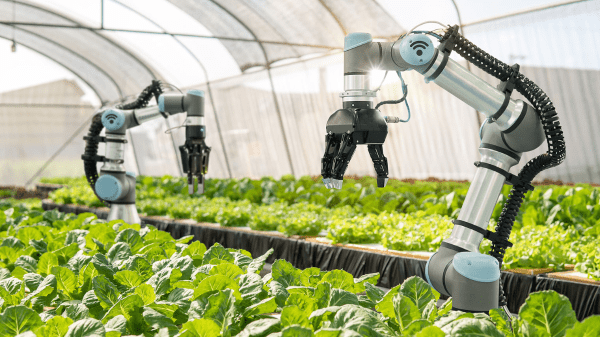Technology is advancing quickly and providing us with benefits we only dreamed of just a decade ago. One particular technology that has proven extremely beneficial in agriculture is automation.
Automation saves organizations time and money by handling repetitive tasks faster, more accurately and even safer than traditional manual handling. Despite its advantages, some might be quick to argue that these tech tools are putting workers out of jobs.


The reality is, not likely.
In fact, more industry leaders are realizing the operational advantage and scaling opportunity for both production and for their existing workers. The result is companies are recognizing the importance of investing in talent, and creating upskilling is paying dividends for both the organization and for the farmworkers.
The Challenge
The most recent USDA census reports the average age of farmers in the U.S. is 57.5 years old. In addition, interest in agriculture employment has seen a decline due to a number of factors, including:
- Immigration challenges;
- Physically demanding work;
- Work-life balance;
- Lack of visible growth opportunities; and
- Increased and easier access to knowledge, education, and other job opportunities.
Although the majority of farmworkers are without advanced schooling, most are knowledgeable and highly skilled. Unfortunately, many farms lack any formal processes for growth opportunities, giving no reason, beyond the paycheck, for workers to stay.
So how can companies leverage automation, coupled with this knowledge and their workers’ expertise to improve their bottom line beyond automation?
Move Up, Not Out
Upskilling. Automation increases overall productivity and efficiency and relieves farmworkers of certain time-consuming and physically demanding tasks. Resourceful organizations are using these outcomes as an opportunity to benefit the company and employees alike.
Start Here
Upskilling simply means teaching or learning additional skills, but to effectively implement an upskilling program, other key challenges need to be addressed. Prior to training, first take inventory and identify skill gaps within the organization: areas in which a clear expert or leader is lacking.
Identify workers within the organization who are top performers and natural leaders to promote and fill those gaps. Offer clear growth paths beginning with employer-sponsored education and training. Investing in employees improves their satisfaction with their job, your company and their general well-being; and it sets your company up with an expert.
Additionally, identifying skill gaps and filling them improves quality, productivity, and efficiency, saving your organization money. But there’s more.
Establishing open communication lines helps employees feel heard. It also assists when forming mentorships within the organization which should be established to train and share that knowledge with the next generation of experts and mentors. Upskilling benefits everyone.
The Competitive Advantage
Providing employees with continued education and clear growth paths has been shown to boost job satisfaction and employee retention while attracting new talent, according to the Society for Human Resource Management.
Fostering a learning mindset and culture where employees feel empowered to learn, grow, set and achieve goals is an important element of Equitable Food Initiative BB #:385632 certification because it provides companies with a competitive advantage.
This leaves organizations with more dedicated, longstanding employees and experts on hand and available to fill-in should someone be out for an extended period of time.
Finally, important to keep top-of-mind when considering implementation of an upskilling program – upskilling is an ongoing process and continuing journey. It is not a reachable destination.
When we stop learning and growing, we stop advancing and wind up falling behind. Providing an environment that promotes education, growth and communication is a win-win-win; for organizations, farmworkers, and consumers.



